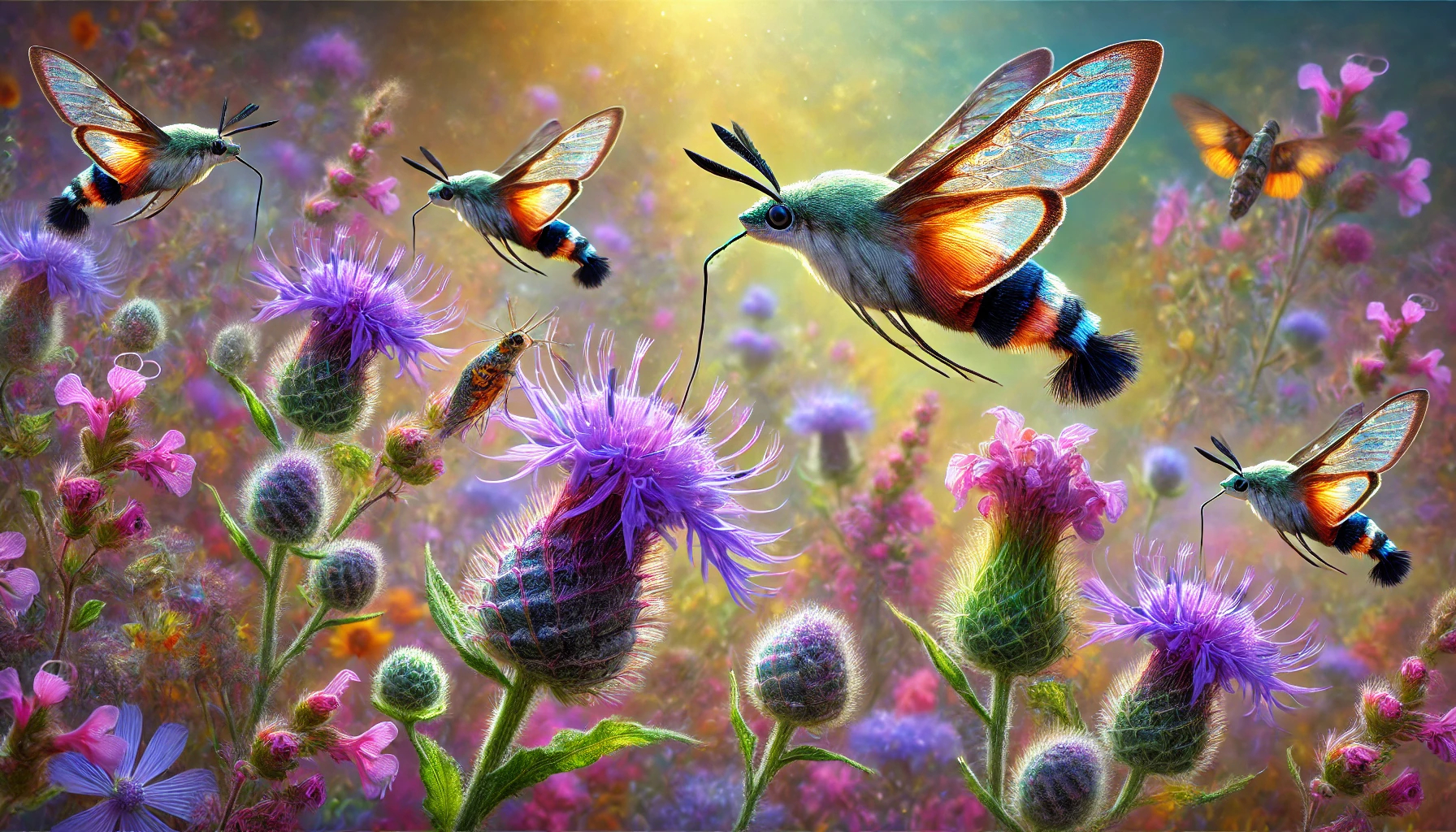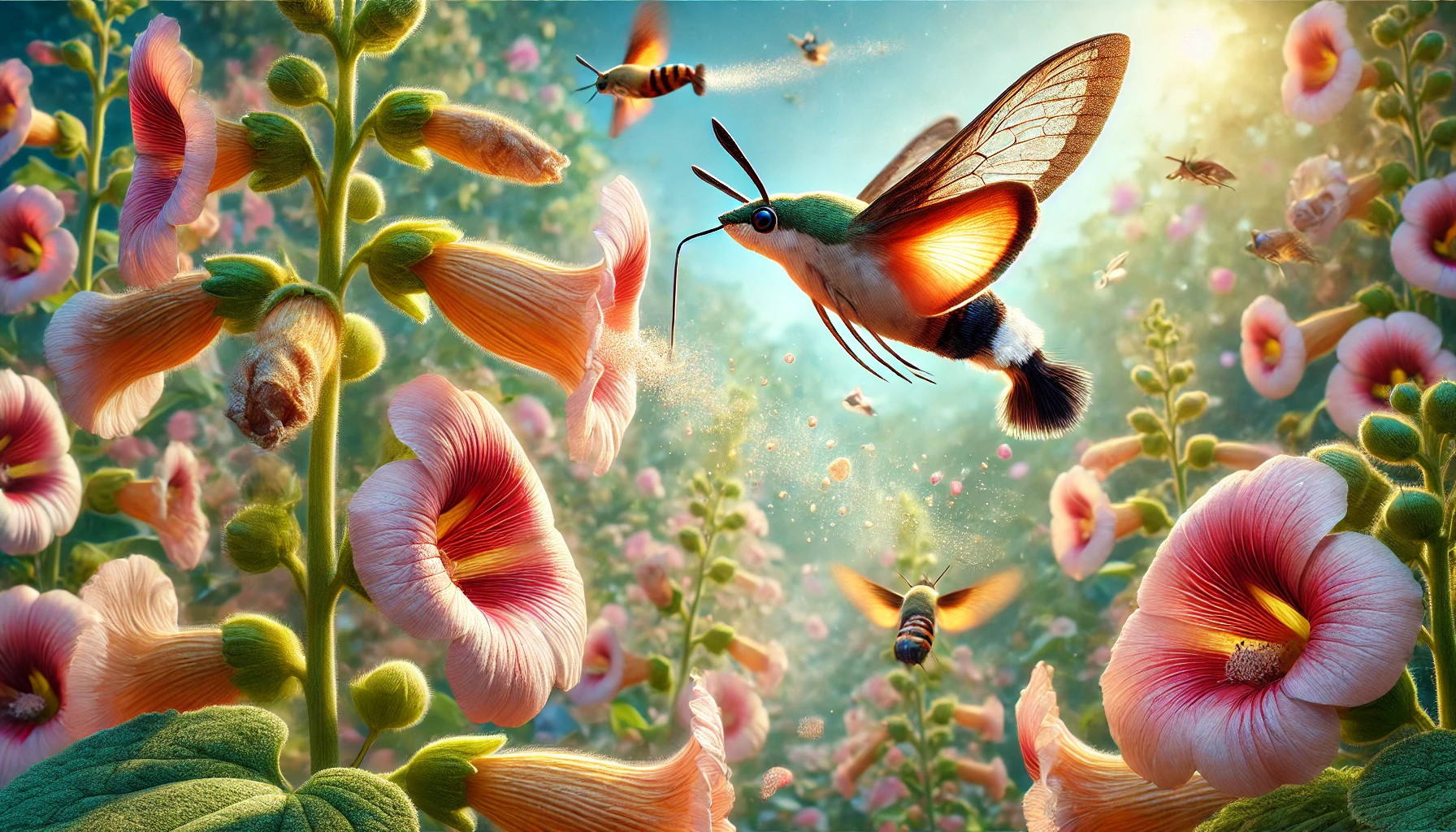Key Takeaways
- Adult hummingbird moths live approximately 3 to 7 weeks, with the entire lifecycle lasting several months.
- These moths are beneficial pollinators and safe, enjoyable garden visitors.
- Gardeners can manage caterpillar (hornworm) challenges using natural and eco-friendly methods.
- Plant nectar-rich flowers and maintain a pesticide-free, welcoming habitat to attract and support hummingbird moths.
 If you’ve been seeing a small creature just above your flowers, you may have seen a hummingbird moth. These intriguing insects are similar to hummingbirds, and they can often be seen hovering elegantly from blossom to blossom. But how long do hummingbird moths live, and what’s so great about their brief lives?
Hummingbird moths, in general, live a fairly short life. Adult hummingbird moths typically live between three to seven weeks, although their entire life cycle—from egg to adult—can last several months depending on environmental conditions and regional climate.
Let’s explore the captivating life of hummingbird moths and learn how you can welcome them into your garden, ensuring these excellent pollinators thrive.
If you’ve been seeing a small creature just above your flowers, you may have seen a hummingbird moth. These intriguing insects are similar to hummingbirds, and they can often be seen hovering elegantly from blossom to blossom. But how long do hummingbird moths live, and what’s so great about their brief lives?
Hummingbird moths, in general, live a fairly short life. Adult hummingbird moths typically live between three to seven weeks, although their entire life cycle—from egg to adult—can last several months depending on environmental conditions and regional climate.
Let’s explore the captivating life of hummingbird moths and learn how you can welcome them into your garden, ensuring these excellent pollinators thrive.


Not getting a solution?
Get your free pest control estimate today!What is a Hummingbird Moth?
- Hummingbird moths are members of the sphinx moth family (Sphingidae), and they’re most famous for their incredible resemblance to hummingbirds. These moths can often be spotted hovering in front of flowers and drinking nectar in a way that resembles hummingbirds. Common species include the hummingbird clearwing moth (Hemaris thysbe) and the white-lined sphinx moth (Hyles lineata) in the U.S.
Here are a few distinctive features to help you identify them:
-
Size: Typically 1–2 inches long with a wingspan of 2–4 inches.
-
Appearance: Plump, fuzzy bodies with either clear or patterned wings, mimicking hummingbirds in flight.
-
Behavior: Daylight and twilight active; hover near flowers to sip nectar using a straw-like proboscis.

The Life Cycle of a Hummingbird Moth
- Learning about the life stages of hummingbird moths will give you a better understanding of their cycle of life and their short but busy life.
-
Egg Stage (1–2 weeks): Eggs are laid on host plants like honeysuckle and viburnum, often under leaves for protection.
-
Caterpillar Stage (2–4 weeks): Known as hornworms; they are green with a horn-like tail and feed heavily on leaves.
-
Pupa Stage (2 weeks to several months): Pupate underground or in leaf litter; late-season pupae overwinter in dormancy until spring.
-
Adult Moth Stage (3–7 weeks): Adults focus on feeding, pollinating, and reproducing, with lifespans dependent on weather and food availability.
Factors Influencing Hummingbird Moth Lifespan
- Several key factors influence hummingbird moth longevity in your garden:
-
Climate: Warmer climates support longer lifespans; colder regions shorten active life.
-
Food Sources: Nectar-rich, diverse gardens help moths survive longer by providing adequate nutrition.
-
Predators: Birds, bats, spiders, and praying mantises can reduce moth survival rates significantly.
-
Human Impact: Pesticides, herbicides, and artificial lighting negatively affect moth populations and longevity.

Benefits of Hummingbird Moths in Your Garden
Hummingbird moths offer several benefits, making them desirable visitors to any U.S. garden: Effective Pollinators Hummingbird moths are excellent pollinators, particularly adept at reaching nectar deep within tubular or trumpet-shaped flowers. They assist in pollinating plants often overlooked by other pollinators such as bees and butterflies. Harmless and Enjoyable Visitors Unlike wasps, bees, or hornets, hummingbird moths are completely harmless. They do not bite or sting, making them safe and enjoyable to watch, especially for families and wildlife enthusiasts. Extended Pollination Period Since these moths are active during twilight, they offer extended pollination beyond typical daylight hours, improving overall garden productivity and ensuring flowers receive adequate pollination.Dealing with Garden Challenges
- While adult hummingbird moths significantly benefit gardens, their caterpillar stage can pose minor challenges. Hornworms can damage ornamental plants and vegetables, especially tomatoes, peppers, and eggplants.
Here’s how to manage them without harming your garden’s ecosystem:
-
Manual Removal: Inspect your plants regularly and gently relocate hornworms away from high-value or vulnerable crops.
-
Encourage Natural Predators: Support birds and beneficial insects like parasitic wasps that help control hornworm populations naturally.
-
Selective Organic Treatments: Apply eco-friendly treatments like Bacillus thuringiensis (Bt) only when infestations become severe.

How to Attract Hummingbird Moths
- To encourage hummingbird moths to visit your garden, consider these practical and straightforward steps:
-
Plant Nectar-Rich Flowers: Add flowers like bee balm, honeysuckle, phlox, butterfly bush, and evening primrose to draw in adult moths.
-
Avoid Pesticides: Create a safe environment for moths and pollinators by eliminating pesticide use in your garden.
-
Provide Suitable Habitat: Leave leaf litter or mulch undisturbed under shrubs to give pupae shelter and overwintering spots.
-
Continuous Blooming: Grow a variety of flowers that bloom across seasons to ensure a consistent nectar supply.
Visit our Species, Control, and Moth DIY Guide sections for additional resources on moths and ways to tackle a moths infestation.





